
Deputy Minister of Agriculture and Environment Nguyen Hoang Hiep speaks at a working session with leaders of the People's Committee and departments and branches in Quang Ngai province. Photo: Cao Nguyen/VNA
According to the Department of Dyke Management and Natural Disaster Prevention and Control (Ministry of Agriculture and Environment), information from the Border Guard Command, as of 4:30 p.m. on November 5, 61,475 vehicles/291,384 workers had been notified, counted, and instructed, including 303 vehicles/5,012 workers anchored in the Hoang Sa and Truong Sa special zones. The vehicles have received warning information and are moving around to avoid. Currently, there are no vehicles in the danger zone.
Provinces and cities have issued sea ban orders such as Dak Lak (banning the sea from 6am on November 5), Da Nang (banning the sea from 4pm on November 5), Quang Ngai (banning the sea from 7pm on November 5), Khanh Hoa (banning the sea from 12pm on November 6), Gia Lai (banning the sea from 5pm on November 5), Lam Dong (banning the sea from November 6).
The provinces and cities from Da Nang to Khanh Hoa have about 38 km of dykes and embankments to protect against coastal erosion. Currently, along the coast of the provinces and cities, there are some areas with landslides or at risk of landslides such as Cua Dai, Hoi An (Da Nang), An My (Dak Lak), etc. Localities need to reinforce to limit landslides when storms make landfall.
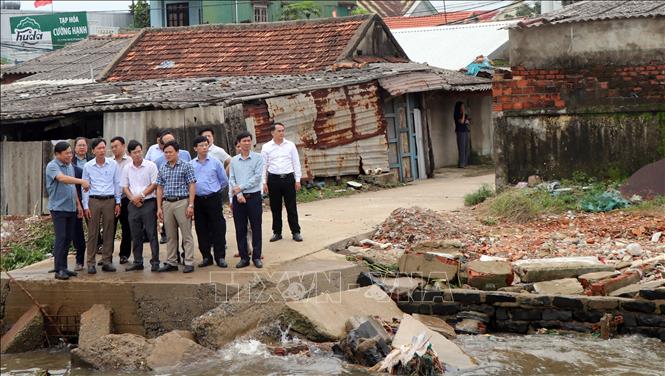
Deputy Minister of Agriculture and Environment Nguyen Hoang Hiep and his delegation inspected the actual erosion situation at Tinh Ky Fishing Port and storm shelter area, Tinh Khe commune, Quang Ngai province. Photo: Cao Nguyen/VNA
The Civil Defense Command of the provinces and cities of Hue, Da Nang, Quang Ngai, Dak Lak, and the Irrigation Investment and Construction Management Board 5 (Ministry of Agriculture and Environment) have directed and operated the reservoirs in the basins of Huong River, Vu Gia - Thu Bon River, Tra Khuc River, and Ba River to increase discharge flow to reserve capacity to be ready to reduce floods for downstream areas.
Regarding irrigation reservoirs in the North Central region, there are currently 2,323 reservoirs, with an average storage capacity of 87% - 100% of the design capacity. Currently, there are 132 damaged reservoirs, 65 reservoirs are being repaired and upgraded (Thanh Hoa 33, Nghe An 7, Ha Tinh 4, Quang Tri 18, Hue city 3).
The South Central and Central Highlands regions have 1,773 lakes, with an average storage capacity of 66% - 99% of the design capacity. Currently, 61 lakes are damaged and 37 are being repaired and upgraded.
To respond to storm 13, the Ministry of Agriculture and Environment requested ministries, branches and localities to strictly implement the Prime Minister's Official Dispatch No. 208/CD-TTg on proactively preventing, avoiding and responding to storm KALMAEGI; Official Dispatch No. 26/CD-BCĐ-BNNMT sent to ministries, branches and People's Committees of provinces and cities from Ha Tinh to Lam Dong on urgent storm response, focusing on calling and guiding ships operating at sea to escape from dangerous areas or to safe shelters, and urgently evacuating people on ships, cages, watchtowers, aquaculture areas, coastal areas, low-lying areas, and areas at high risk of deep flooding to safety.
Provinces and cities must review and prepare plans to evacuate households in dangerous areas, especially coastal areas, areas at high risk of landslides, flash floods, low-lying areas, and deep flooding to safe places; have plans to support temporary accommodation, food, and necessities for people who have to evacuate, ensuring a stable life for people; complete tree pruning, bracing, and reinforcing houses before the storm makes landfall.....
Localities in the areas affected by storms and floods should plan and decide early to let students stay home from school before the storm hits and after the storm; organize remote traffic flow, limit people from going out during storms and heavy rains; inform and guide people to keep their belongings, food, and essential supplies high to cope with storms and floods, and minimize damage....
When the storm makes landfall and there are floods after the storm: Provinces and cities continue to review and evacuate people in deeply flooded areas, at risk of flash floods and landslides to safe places; provide food and necessities to people at evacuation sites; arrange forces, vehicles, materials, food and necessities in key areas, especially those at risk of being cut off and isolated due to landslides and floods to be ready to respond to situations of being isolated for many days and deploy response, rescue and relief work when bad situations occur.
Provinces and cities must deploy measures to ensure the safety of dykes, reservoirs and downstream areas; proactively operate reservoirs to reduce flooding in downstream areas when heavy rains and floods occur; organize regular operations to regulate and be ready to handle possible situations; deploy drainage plans to protect industrial parks, urban areas and residential areas.
Localities assign leaders to directly direct flood response work in key areas, especially villages and hamlets at risk of being isolated due to floods, landslides, and flash floods; deploy plans to ensure uninterrupted communication from villages and hamlets to all levels, without interruption of information. At the same time, organize 24/7 on-duty teams to monitor natural disaster situations and deploy response measures...
Source: https://baotintuc.vn/xa-hoi/thuc-hien-xa-nuoc-theo-quy-trinh-di-doi-nguoi-dan-khoi-vung-nguy-hiem-20251105211234281.htm




![[Photo] Opening of the 14th Conference of the 13th Party Central Committee](https://vphoto.vietnam.vn/thumb/1200x675/vietnam/resource/IMAGE/2025/11/05/1762310995216_a5-bnd-5742-5255-jpg.webp)



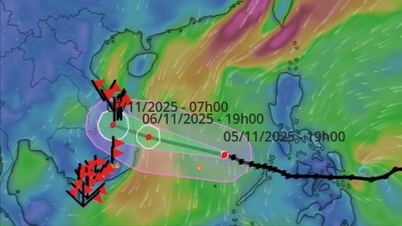


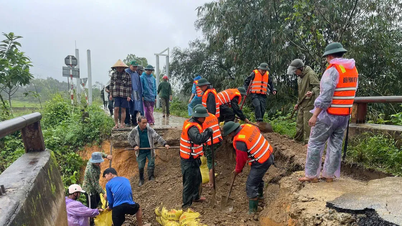




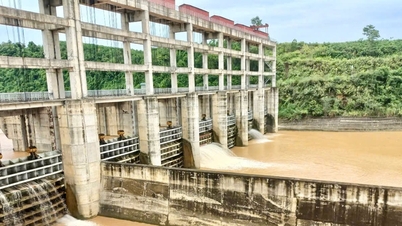

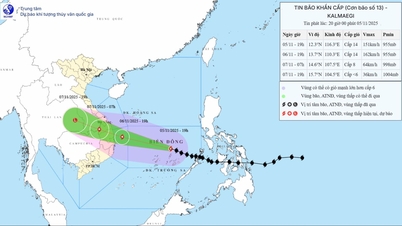
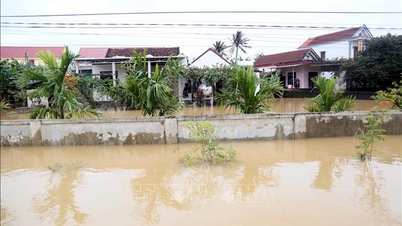



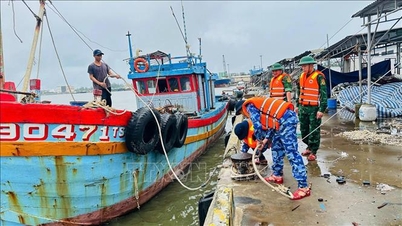









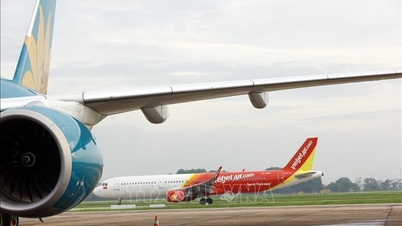
![[Photo] Panorama of the Patriotic Emulation Congress of Nhan Dan Newspaper for the period 2025-2030](https://vphoto.vietnam.vn/thumb/1200x675/vietnam/resource/IMAGE/2025/11/04/1762252775462_ndo_br_dhthiduayeuncbaond-6125-jpg.webp)







































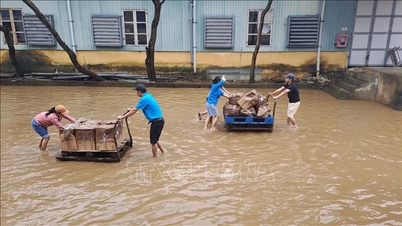































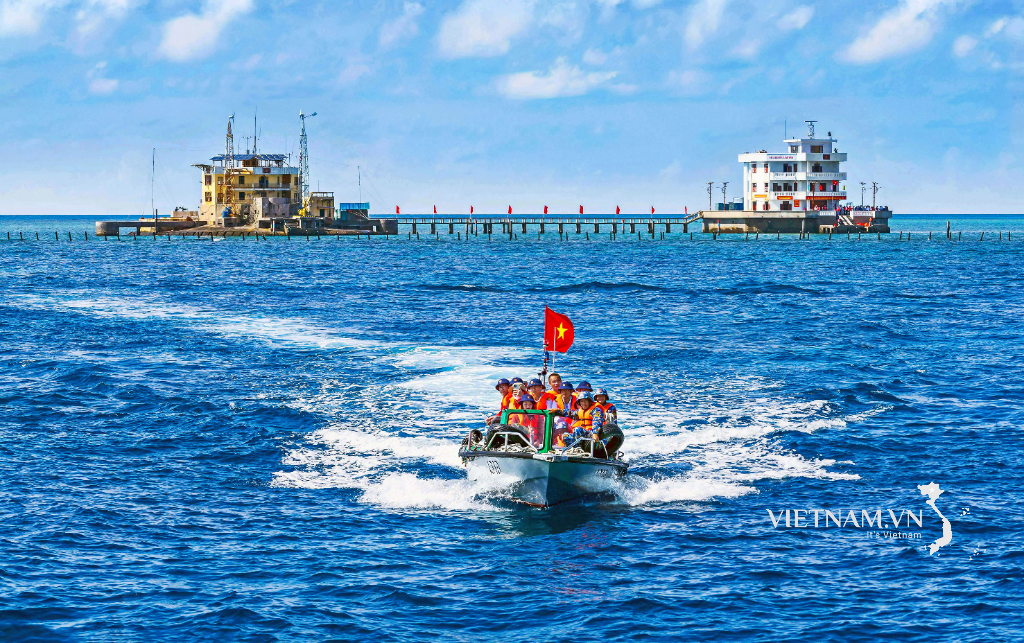
Comment (0)